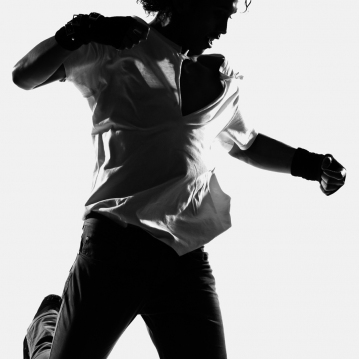
PART 1
If you are interested in improving the way you achieve results (in your career as well as your personal life), it would be helpful to investigate the way professional performers produce results. Professional athletes, artists, emergency room doctors, educators, entertainers, trial lawyers, etc., all have figured out a way to produce Ultimate Performances on a regular basis.
An Ultimate Performance An Ultimate Performance is comprised of two components - Pleasure and Precision. The professional performer first shifts into a pleasurable performing mode - one that contains relaxation, energy, focus, confidence, and faith. (Relaxation also includes a nurturing breathing and pulse rate when dealing with non-physical challenges.) Once in this pleasurable performing mode, the professional will then commit to executing specific actions. More often than not, these actions will produce precise results. By applying this Pleasure and Precision Principle, professionals are able to produce an Ultimate Performance.
How to Build an Ultimate Performance
When building an Ultimate Performance, it should be constructed in the same manner you would build a house; the foundation (pleasure) needs to be created before attempting to place the roof on the house (precision). The foundation of pleasure (relaxation, energy, focus, confidence, and faith) is so vital to the professionals’ performing mix that they will treat it as the constant and view the precise actions that will be taken as the variables. In other words, professionals will trust, rely, and create from a pleasurable production center rather than substituting a survival production center of fear (in the form of tension, stress, doubt, or panic), in order to produce a precise result. Professionals know that in order to tap into their full potential and perform in an optimum fashion that first and foremost, they must remain committed to the pleasure priority. This is why the principle is called The Pleasure and Precision Principle rather than The Precision and Pleasure Principle.
How Professionals Make Mistakes
The Pleasure Priority The best way to observe the pleasure priority at work is to view the discarded scenes (called outtakes) of motion pictures. Studios are now adding them to the end of comedies - especially on DVDs. As you are watching these imperfect scenes, place your attention on the actor/actress speaking. Without warning, the mistake will suddenly pop out of the performers mouth - surprising everyone including the actor/actress.
The mistake appears as a surprise because the performer remained in a constant pleasurable state (relaxation, energy, focus, confidence, and faith) and did not telegraph the error by reverting to terror in the form of bulging eyes, tense shoulders, or a stiff body in order “to achieve” a result. Tony Danza’s Foundation One afternoon I had the pleasure of giving Tony Danza a tennis lesson in beautiful Malibu. During a break, I asked him if he felt that there was a performing thread that connected all of his professional skills (boxing, acting, singing, and dancing)? After thinking for a moment he responded with, “the courage to remain calm.” He went on to say that regardless of the external circumstances, stressfilled situation, and/or unfamiliar environment, the courage to remain calm (the pleasure priority) should be the performer’s first priority.
Tony also shared that it was his “courage to remain calm” skill, that he initially learned as a boxer, that helped him during his audition for “Taxi” as well as his first season acting on the show.
How Amateurs Make Mistakes
One of the things that separates the amateur from the professional is that many amateurs do not trust the pleasure priority mode or have the courage to remain calm, confident, and “faith-full” when producing results. Instead, when placed in an unfamiliar circumstance and/or a pressure filled environment, they will drop the pleasure priority mode and grab onto a precision priority mode in order to create results.
Unfortunately, the precision priority mode is motivated by fear and survival rather than trust, selfconfidence, and selfexpression. It will therefore contain tension, terror, doubt, panic, and worry. This will force the amateur to execute actions from an inefficient production center.






















